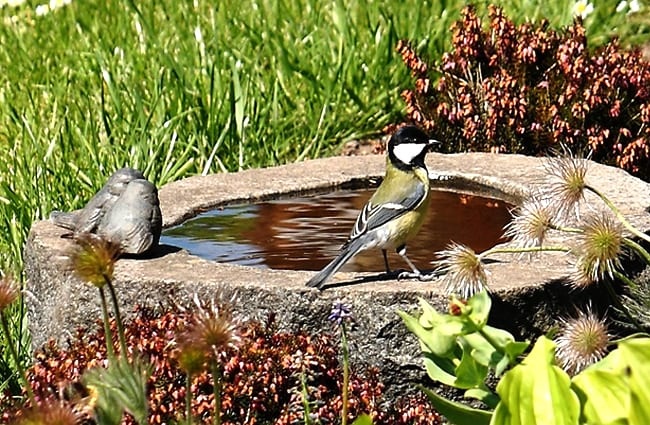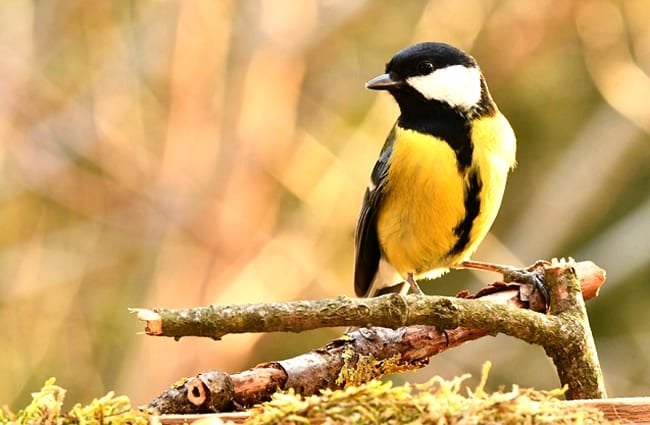The Wonderful World of Titmice
Titmice, a charming and energetic group of small birds, are a familiar sight in many parts of the world. These delightful creatures, known for their inquisitive nature and cheerful calls, play a vital role in the ecosystems they inhabit. This comprehensive guide delves into the fascinating life of titmice, covering their habitat, behavior, evolution, and interaction with both the environment and humans.

What are Titmice? A General Overview
The term “titmouse” encompasses several species within the Paridae family. Common examples include the Black capped Chickadee, Tufted Titmouse, Carolina Chickadee, and the Oak Titmouse. These birds are generally small, ranging from four to six inches in length, and are characterized by their round bodies, small bills, and active foraging behavior. Many species exhibit distinct markings, such as the Tufted Titmouse’s prominent crest and the Black capped Chickadee’s distinctive black cap and bib.
Habitat and Distribution
Titmice are remarkably adaptable, thriving in a variety of habitats. They are commonly found in deciduous and mixed forests, woodlands, suburban gardens, and even urban parks. Their distribution varies by species. The Black capped Chickadee is prevalent throughout much of North America, while the Tufted Titmouse is more common in the eastern and southeastern United States. They prefer areas with ample tree cover for nesting and foraging, but readily utilize bird feeders and other human-provided resources.
Evolutionary History
The Paridae family, to which titmice belong, has a rich evolutionary history dating back to the Oligocene epoch, approximately 30 million years ago. Fossil evidence suggests that early parids originated in Eurasia, gradually diversifying and spreading to other regions. Their ability to adapt to changing environments, coupled with their complex vocalizations and social behaviors, likely contributed to their evolutionary success. Genetic studies continue to refine our understanding of titmouse relationships and their place in the avian family tree.

Diet and Foraging Behavior
Titmice are primarily insectivores, feeding on a wide variety of insects, caterpillars, spiders, and other invertebrates. During the breeding season, insects constitute the bulk of their diet, providing essential protein for developing chicks. In the winter, when insects are scarce, they supplement their diet with seeds, berries, and nuts. They are known for their caching behavior, storing seeds and other food items in crevices and under bark for later consumption. This scatter hoarding helps them survive lean times. They are also frequent visitors to bird feeders, readily consuming sunflower seeds, peanuts, and suet.
Mating and Reproduction
Titmice are generally monogamous, forming long-term pair bonds. Breeding season typically begins in early spring. They are cavity nesters, utilizing natural holes in trees or excavating their own cavities in decaying wood. They also readily accept nest boxes. The female typically lays five to ten eggs, incubating them for about two weeks. Both parents participate in feeding the chicks, which fledge from the nest after about 18 to 21 days. Young titmice may remain with their parents for a period of time, learning essential foraging skills.

Ecological Role and Interactions
Titmice play an important role in maintaining the health of ecosystems. As insectivores, they help control populations of forest pests. They also contribute to seed dispersal. They interact with a variety of other animals. They may compete with other cavity-nesting birds for nesting sites. They are also preyed upon by hawks, owls, and other predators. Titmice are known to participate in mixed species foraging flocks, benefiting from increased vigilance and access to food resources. They also exhibit mobbing behavior, cooperatively harassing potential predators.
Titmice and Humans
Humans have a long-standing relationship with titmice. They are popular subjects for birdwatchers and photographers. Providing bird feeders and nest boxes can attract titmice to gardens and yards, offering opportunities for observation and enjoyment. However, habitat loss and fragmentation pose significant threats to titmouse populations. Conserving forests and woodlands is crucial for ensuring their long-term survival. Avoiding pesticide use can also protect them from exposure to harmful chemicals.

Interesting Facts about Titmice
- Titmice have remarkable spatial memory, allowing them to remember the locations of thousands of cached food items.
- They can lower their body temperature at night to conserve energy, entering a state of reduced metabolic rate.
- Titmice have complex vocalizations, using a variety of calls and songs to communicate with each other.
- Their brains develop early and remain complex throughout their lives.
- Some titmouse species exhibit cooperative breeding, with helpers assisting the breeding pair in raising young.
For the Aspiring Zoologist: Advanced Topics
Current research on titmice focuses on a number of exciting areas. Researchers are investigating the genetic basis of their cognitive abilities, exploring the neural mechanisms underlying their spatial memory and problem-solving skills. Studies are also examining the impact of climate change on titmouse populations, assessing their ability to adapt to shifting environmental conditions. Furthermore, scientists are investigating the role of parasites and diseases in titmouse health and survival. The application of advanced tracking technologies such as miniature GPS loggers can further illuminate the daily movements and foraging behavior of these fascinating birds.

Encountering Titmice in the Wild: A Guide for Hikers
If you encounter a titmouse while hiking, observe it from a distance, avoiding any disturbance. Listen for its cheerful calls and watch for its active foraging behavior. Be patient and respectful of its natural environment. Do not attempt to feed it or approach its nest. Report any sightings of injured or distressed birds to local wildlife authorities.
Caring for Titmice in Captivity: A Zookeeper’s Guide
Providing appropriate care for captive titmice requires careful attention to their needs. Provide a spacious aviary with plenty of perches, branches, and foliage. Offer a varied diet consisting of insects, seeds, berries, and nuts. Ensure access to clean water for drinking and bathing. Provide opportunities for enrichment, such as puzzle feeders and foraging toys. Monitor their health closely and provide veterinary care as needed. Avoid overcrowding and minimize stress.

Titmice are truly remarkable birds, captivating us with their intelligence, energy, and charm. By learning more about these delightful creatures, we can appreciate their vital role in the natural world and contribute to their conservation for generations to come.

![Red Angus Closeup of a beautiful Red Angus cowPhoto by: U.S. Department of Agriculture [pubic domain]https://creativecommons.org/licenses/by/2.0/](https://animals.net/wp-content/uploads/2020/03/Red-Angus-4-238x178.jpg)




![Red Angus Closeup of a beautiful Red Angus cowPhoto by: U.S. Department of Agriculture [pubic domain]https://creativecommons.org/licenses/by/2.0/](https://animals.net/wp-content/uploads/2020/03/Red-Angus-4-100x75.jpg)

